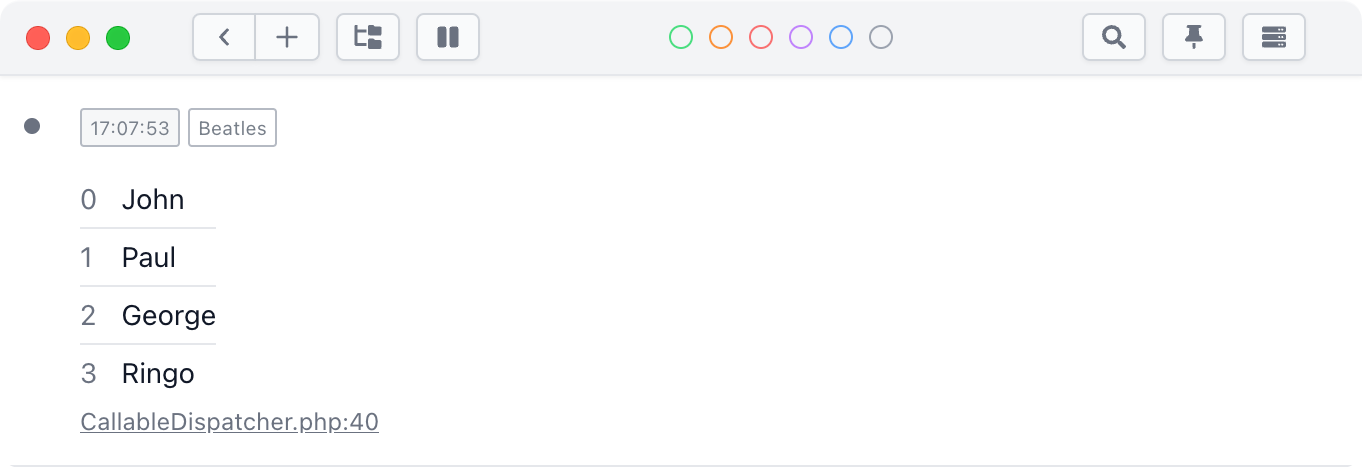Customizing the output in Ray
#Expanding arrays and objects
When sending an array or object to Ray, it will be displayed in a collapsed state.
To open up a node, you can use the expand method.
// will open up the first level of nodes ray($arrayOrObject)->expand(); // will open up the first three levels of nodes ray($arrayOrObject)->expand(3); // will open the node with key named `myKey` ray($arrayOrObject)->expand('myKey'); // open up all nodes with the given names ray($arrayOrObject)->expand('myKey', 'anotherKey'); // you can use dot notation to expand deeper nodes ray($arrayOrObject)->expand('myKey.nestedKey');
You can also use the expandAll() method to expand all levels.
#Using colors
You can colorize things you sent to Ray by using one of the color functions.
ray('this is green')->green(); ray('this is orange')->orange(); ray('this is red')->red(); ray('this is blue')->blue(); ray('this is purple')->purple(); ray('this is gray')->gray();

#Using sizes
Ray can display things in different sizes.
ray('small')->small(); ray('regular'); ray('large')->large();

#Adding a label
You can customize the label displayed next to item with the label function.
ray(['John', 'Paul', 'George', 'Ringo'])->label('Beatles');

#Displaying a table
You can send an associative array to Ray with the table function.
ray()->table([ 'First' => 'First value', 'Second' => 'Second value', 'Third' => 'Third value', ]);

As a second argument, you can pass a label that will be displayed next to the table.
ray()->table(['John', 'Paul', 'George', 'Ringo'], 'Beatles');
